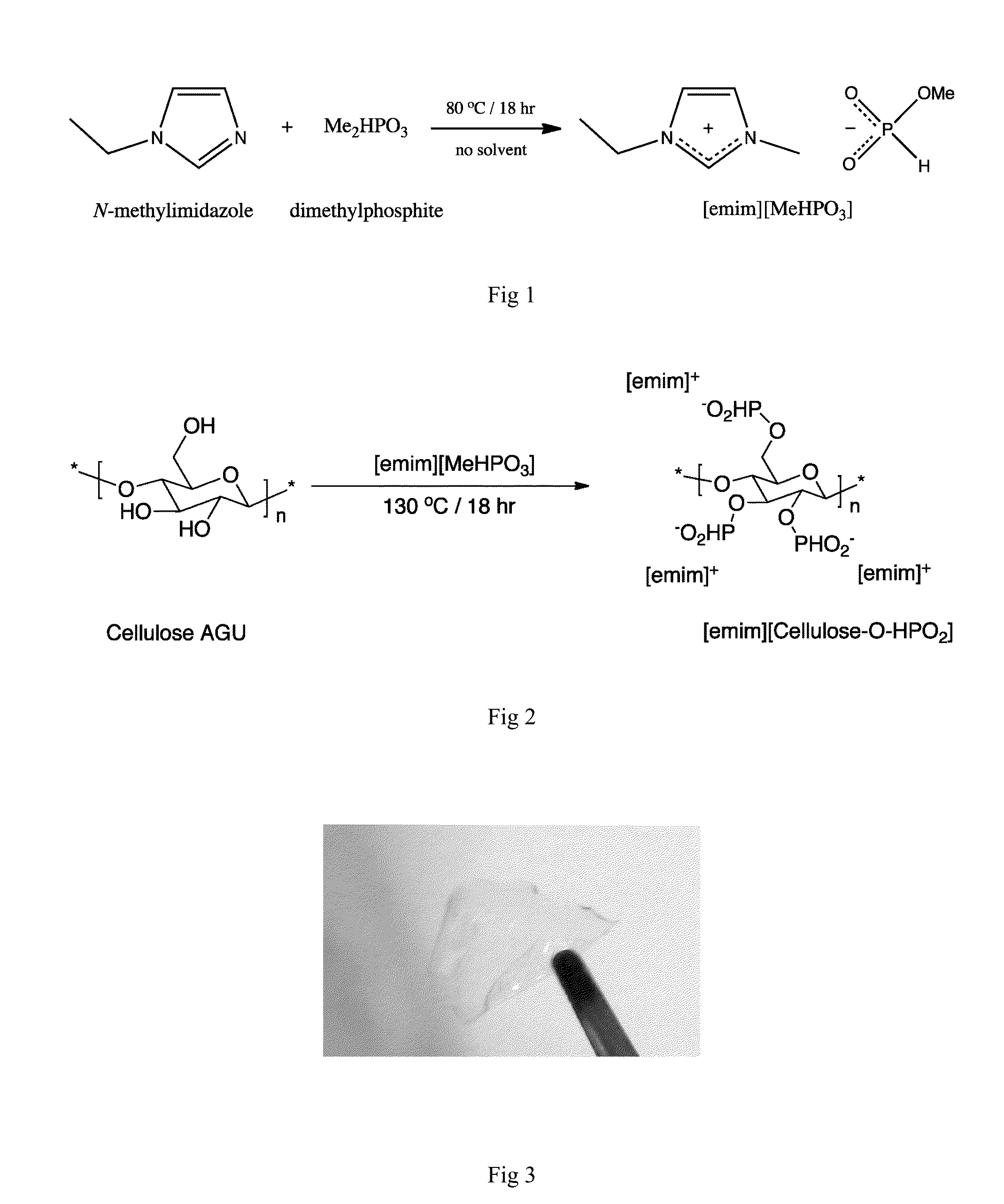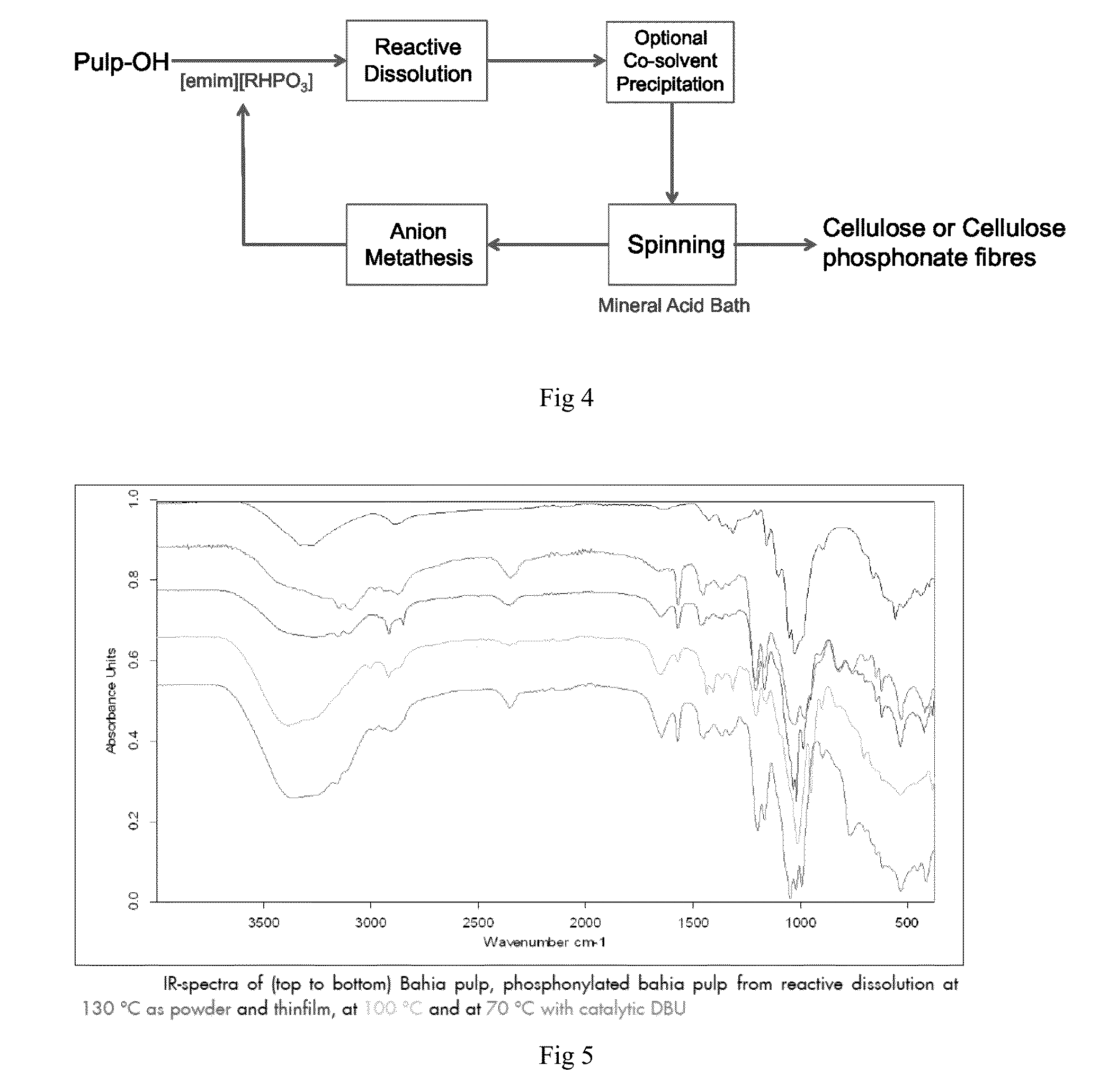Method of modifying polymers
a polymer and polymer technology, applied in the field of polymer modification, can solve the problems of cellulose, as a hydroxylated polymer, particularly difficult processing, and unsatisfactory polymer modification, and achieve the effect of considerable benefits
- Summary
- Abstract
- Description
- Claims
- Application Information
AI Technical Summary
Benefits of technology
Problems solved by technology
Method used
Image
Examples
example 1
[0074]1-Ethyl-3-Methylimidazolium Methylphosphonate ([emim][MeHPO3]) Synthesis
[0075]1-Ethylimidazole (96.1 g, 1.00 mol) was added dropwise (over 1 h) to neat dimethylphosphite (110.0 g, 1.00 mol) at 85° C. The reaction was allowed to stir for a further 18 h at 80° C. The mixture was rotary evaporated at 65° C. under high vacuum for 18 h, to yield a clear pale yellow oil (206.0 g).
[0076]The reactants and the reaction steps are also shown in FIG. 1.
example 2
[0077]Methyltrioctylphosphonium Methylphosphonate ([P8881][MeHPO3] Synthesis
[0078]Trioctylphosphine (370 g, 1.00 mol) was added dropwise (over 1 h) to neat dimethylphosphite (110.0 g, 1.00 mol) at 85° C. under argon. The reaction was allowed to stir for a further 18 h at 80° C. The mixture was rotary evaporated at 65° C. under high vacuum for 18 h, to yield a clear pale yellow oil (480 g).
example 3
[0079]Modification of Pre-Hydrolysis Kraft (PHK) Pulp with [emim][MeHPO3] at 130° C.
[0080][emim][MeHPO3] 95 g was added to a flask containing PHK (5 g). The mixture was stirred under argon atmosphere for 18 hr at 130° C. The reaction mixture was diluted with an equal volume of methanol and filtered through a G3 sintered funnel. The crude product was precipitated by a slow addition of acetone (3 volumes). The precipitates were washed with further acetone:methanol (95:5). The material was reprecitated again using the same methanol acetone precipitation and volumes. The resulting sample was then dried in a vacuum oven to yield a white powder (9.5 g). The resulting product was water soluble.
[0081]The reactants and the reaction steps are also shown in FIG. 2.
PUM
| Property | Measurement | Unit |
|---|---|---|
| total weight | aaaaa | aaaaa |
| molar ratio | aaaaa | aaaaa |
| weight percent gain | aaaaa | aaaaa |
Abstract
Description
Claims
Application Information
 Login to View More
Login to View More - R&D
- Intellectual Property
- Life Sciences
- Materials
- Tech Scout
- Unparalleled Data Quality
- Higher Quality Content
- 60% Fewer Hallucinations
Browse by: Latest US Patents, China's latest patents, Technical Efficacy Thesaurus, Application Domain, Technology Topic, Popular Technical Reports.
© 2025 PatSnap. All rights reserved.Legal|Privacy policy|Modern Slavery Act Transparency Statement|Sitemap|About US| Contact US: help@patsnap.com



